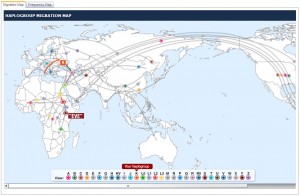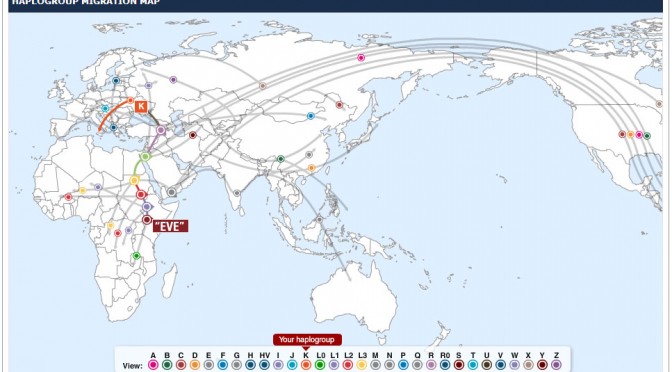In an effort to learn more about my family’s history, I’ve ordered several DNA analyses.
First, I ordered an autosomal DNA analysis from Ancestry.com. This test was an attempt to identify missing links in my family tree. Almost every week, Ancestry.com provides me with a list of new potential matches — other customers who tested their DNA who may be third, fourth, or more distant cousins. Since the company provided me with the initial results, I’ve received hundreds of these new potential matches.
I have yet to confirm a relationship with anyone listed as a potential relative. These false positives may be a common problem among those with certain DNA associated with Ashkenazic Jewish ancestry.
The Family Finder DNA test from FamilyTreeDNA provides a similar type of analysis. Again, I have hundreds of matches; in fact, I sent a few emails to those listed as potentially being third cousins, but I’ve received no responses. This is an old service; those who received their results many years ago may no longer be checking the email addresses they provided originally, or just aren’t interested in determining whether there is a relation.
FamilyTreeDNA also offers testing of Y-chromosome and mitochondrial DNA. The Y-DNA test focuses on patrilineal ancestry. Assuming the analysis is correct, I fall within haplogroup G2c. Or at least, that is what I assumed based on the markers when I received the data from the test. Since then, FamilyTreeDNA has changed the way it describes haplogroups. I am now categorized as G-M201. My testing did not go far enough to determine my specific subgroup within haplogroup G — that would require a more expensive test. Part of haplogroup G migrated from the Middle East into Europe while another part migrated to South Asia.

The image on the right shows the migration path for haplogroup K. The “Eve” indicated on the map isn’t the biblical Eve, it’s Mitocondrial Eve. All mitochondrial DNA can be traced back to this theoretical woman, the most recent common ancestor of all living women, who lived in Africa about 200,000 years ago. The K2a2a1 subclade of haplogroup K is identified as being exclusively Ashkenazi.
In addition to the proposed relatives listed among the Family Finder matches, the Y-DNA and mtDNA tests also provide a list of potential matches. Very few people provide their family trees, however, so it would be almost impossible to determine if there are any close relatives in the system without sending out mass emails.
Taking all the DNA tests into account, I appreciate the idea that I can trace the historical migration of my patrilineal and matrilineal ancestors back to practically the origin of the species, but those two lines make up a small portion of me. Going back four generations, my Y-DNA and mtDNA represent 12.5% of my ancestry (two ancestors of sixteen). Going back eight generations, the same DNA represents only 0.4% of my ancestry (two ancestors of 256). Go back 1,000 years, about 50 generations, and my Y-DNA and mtDNA represent about one five-hundred-trillionth of my total ancestry (assuming there has been no duplication of ancestors, but is also impossible because there were only about 400 million people alive in the year 1000).
That’s the extent of my satisfaction with these DNA tests. So far, the results have done little to identify relatives who might help me build my family tree. There has been one potential close call, but my skeptical nature prevents me from agreeing to a potential relationship without some sort of documentation, or at least some fairly convincing evidence.

Leave a Reply